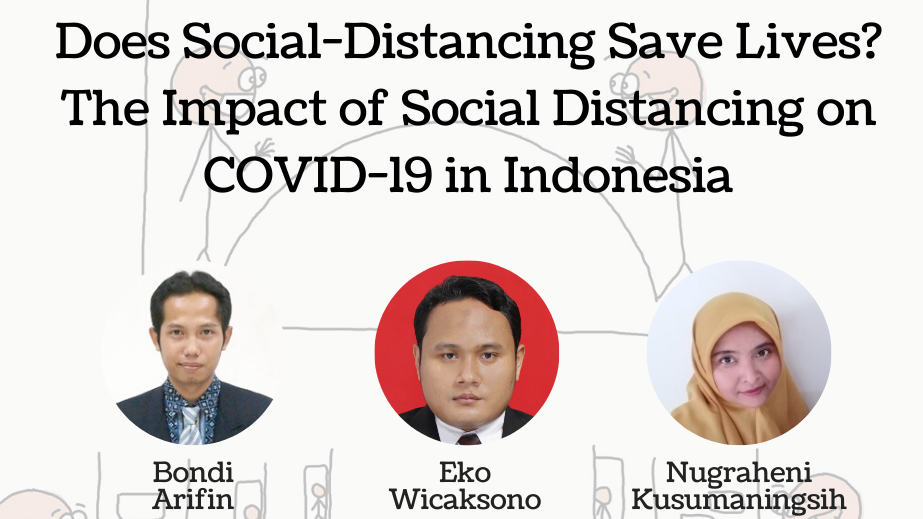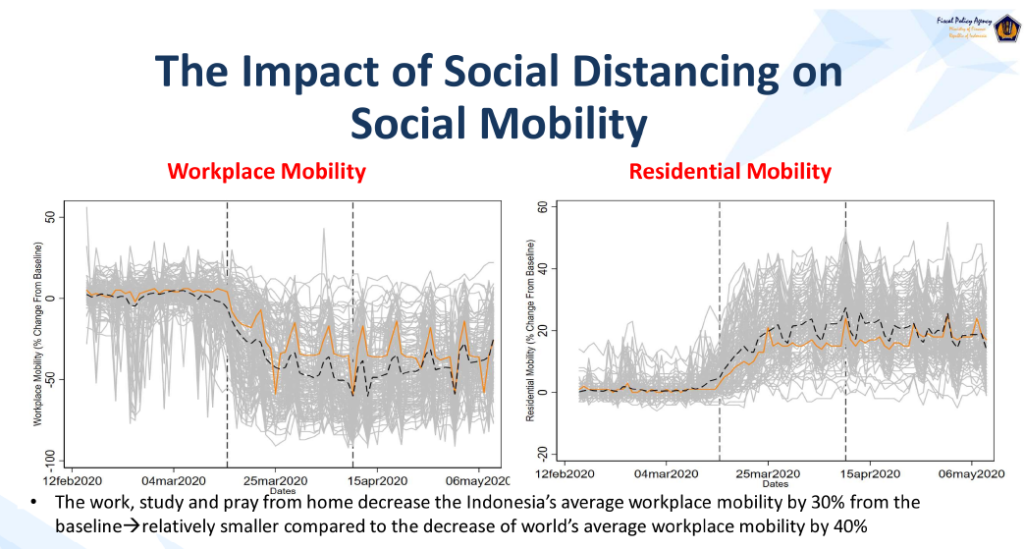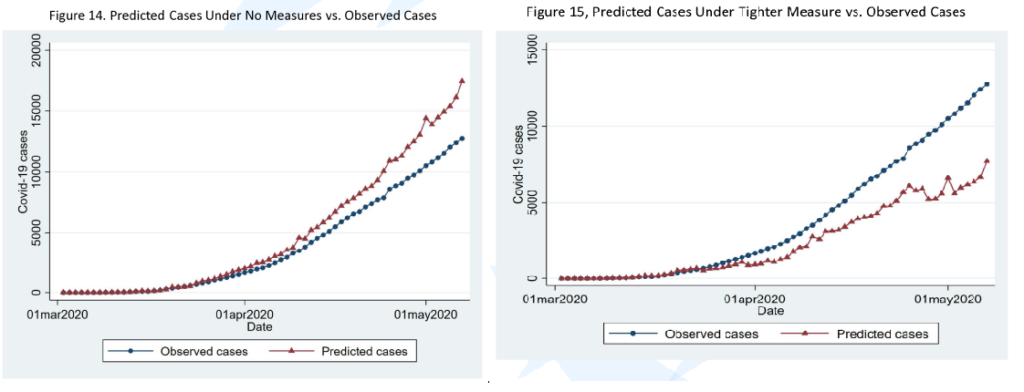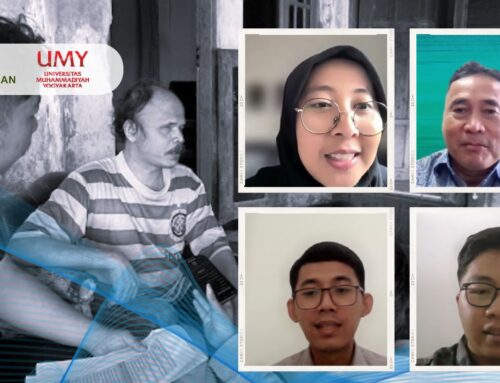FKP hosted by ANU Indonesia Project with Bondi Arifin, Eko Wicaksono, and Nugraheni Kusumaningsih (Fiscal Policy Agency, Ministry of Finance Republic of Indonesia). Tuesday, 4 August 2020.
KEYPOINTS:
- Indonesian government took two important social distancing measures through Work, Study, and Worship from home policy and Large-Scale Social Restriction (PSBB). Using Google Mobility Report and the official COVID-19 cases data in Indonesia from 34 provinces in Indonesia, the study evaluated the impact of these measures on social mobility and the growth rate of confirmed COVID-19 cases. The study found that mobility to workplaces has been reduced by 30 percent due to the Work, Study, and Worship from home policy and PSBB in DKI Jakarta has significantly reduced workplace mobility by 9.5 percent.
- The study shows that COVID-19 cases would be around 37 percent higher by 7 May 2020 without social distancing measures. The government has to be very cautious in reopening the economy. Otherwise, public health risks will be increased, and the economy will have a slower recovery. A more disciplined Large Scale Social Restriction has to be done to achieve better results.
SUMMARY
- Social distancing intervention by the government becomes crucial in hampering the spread of the COVID-19 virus. The first social distancing measure introduced by the Indonesian government was on March 16th, 2020 through the Work, Study, and Worship from home policy. Later the government also implemented Large Scale Social Restriction (PSBB) on March 31st, 2020. The study evaluated the impact of these two measures on social mobility and the growth rate of confirmed COVID-19 cases.
- Two main data sets were used in this study. First, daily official COVID-19 cases data from Indonesia National Disaster Management Authority (BNPB) for each of the 34 provinces in Indonesia from 1 March (one day before the first case was announced in Indonesia) until 7 May 2020. The second data is from the Google Mobility Report that provides data on the mobility of mobile phone users in 34 provinces in Indonesia. The study used these data sources to estimate the impact of PSBB nation-wide and in Jakarta, West Sumatera and Gorontalo Provinces.
- There are two identification strategies modeled in this study. The first is synthetic control design to estimate the impact of PSBB on workplace mobility, and an event-study-style model to estimate the impact of social distancing and PSBB on COVID-19 confirmed cases. The provinces that conducted PSBB will be compared to other provinces which resemble them the most in order to get a proper comparison. The difference between them over time will give an estimation of how big the impact of the PSBB measure on the workplace mobility. For the impact on number of cases, the confirmed were plotted in 7 days interval for each province and using the event-study-style model, the difference between provinces can be followed for each 7 days interval point of time. This will generate a trend that shows the difference between the treated provinces to the other provinces in each point of time over the course of the social distancing and PSBB measures implementation.
- There were several key findings from the study. First, there was a significant reduction in mobility to workplaces after the Work, School, and Worship at home policy and PSBB began. As shown in the graph below, workplace mobility dropped after the first measure was carried out and relatively stable after the second measure. The measure reduces mobility at around 30 percent. On the other hand, the social distancing measure increased residential activities by 1 percent. Residential mobility increased after the first measure, but the change was not as large as the decrease in workplace mobility. This implies that people were still doing activities outside aside from working.
- Next, the study shows the effect of PSBB on workplace mobility in Jakarta. The difference is estimated between workplace mobility in Jakarta and its ‘synthetic’ counterparts (the provinces most similar to Jakarta as determined by the software program based on the inputted data: West Java, Special Region of Yogyakarta, and Bali) after the PSBB implementation. The result suggests that the mobility to workplaces was reduced by 9.5 percent.
- The next result is the impact of social distancing measures on the COVID-19 growth rate. The estimation shows after 15 days of distancing measure, the COVID-19 growth rate is significantly reduced. A percent increase in residential activity reduced the growth of COVID-19 by 1.5 percent. The impact remains stable after three weeks of implementation and stricter measures would have reduced case growth more.
- Lastly, the study predicts what the counterfactual growth rate would have been without the social distancing measures. As shown by the graph below, the predicted cases trend will go over the observed cases trend if there were no measures. By 7 May 2020 the cases would have been 37 percent higher than the observed cases under social distancing measures (left figure). Moreover, if tighter measures were implemented, the cases could have been decreased by 40% as the trend shown in the graph below (right figure).
8. The government has to be very cautious in reopening the economy. Otherwise, public health risks will increase and slower recovery of the economy will be observed. A more disciplined Large-Scale Social Restriction is needed to achieve better results.







